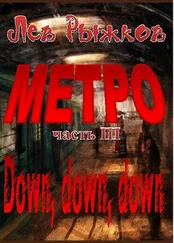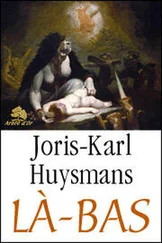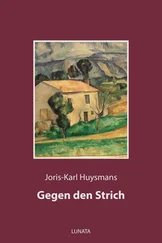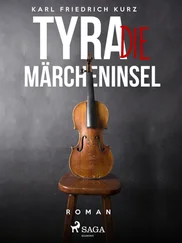Joris-Karl Huysmans - Down There (Là-Bas)
Здесь есть возможность читать онлайн «Joris-Karl Huysmans - Down There (Là-Bas)» весь текст электронной книги совершенно бесплатно (целиком полную версию без сокращений). В некоторых случаях можно слушать аудио, скачать через торрент в формате fb2 и присутствует краткое содержание. Жанр: Классическая проза, на английском языке. Описание произведения, (предисловие) а так же отзывы посетителей доступны на портале библиотеки ЛибКат.
- Название:Down There (Là-Bas)
- Автор:
- Жанр:
- Год:неизвестен
- ISBN:нет данных
- Рейтинг книги:3 / 5. Голосов: 1
-
Избранное:Добавить в избранное
- Отзывы:
-
Ваша оценка:
- 60
- 1
- 2
- 3
- 4
- 5
Down There (Là-Bas): краткое содержание, описание и аннотация
Предлагаем к чтению аннотацию, описание, краткое содержание или предисловие (зависит от того, что написал сам автор книги «Down There (Là-Bas)»). Если вы не нашли необходимую информацию о книге — напишите в комментариях, мы постараемся отыскать её.
Down There (Là-Bas) — читать онлайн бесплатно полную книгу (весь текст) целиком
Ниже представлен текст книги, разбитый по страницам. Система сохранения места последней прочитанной страницы, позволяет с удобством читать онлайн бесплатно книгу «Down There (Là-Bas)», без необходимости каждый раз заново искать на чём Вы остановились. Поставьте закладку, и сможете в любой момент перейти на страницу, на которой закончили чтение.
Интервал:
Закладка:
For hours one could browse around at ease among the ruins, and smoke and daydream. Unfortunately, certain parts were inaccessible. The donjon was still shut off, on the Tiffauges side, by a vast moat, at the bottom of which mighty trees were growing. One would have had to pass over the tops of the trees, growing to the very verge of the wall, to gain a porch on the other side, for there was now no drawbridge.
But quite accessible was another part which overhung the Sèvre. There the wings of the castle, overgrown with ivy and white-crested viburnum, were intact. Spongy, dry as pumice stone, silvered with lichen and gilded with moss, the towers rose entire, though from their crenelated collarettes whole blocks were blown away on windy nights.
Within, room succeeded glacial room, cut into the granite, surmounted with vaulted roofs, and as close as the hold of a ship. Then by spiral stairways one descended into similar chambers, joined by cellar passageways into the walls of which were dug deep niches and lairs of unknown utility.
Beneath, those corridors, so narrow that two persons could not walk along them abreast, descended at a gentle slope, and bifurcated so that there was a labyrinth of lanes, leading to veritable cells, on the walls of which the nitre scintillated in the light of the lantern like steel mica or twinkling grains of sugar. In the cells above, in the dungeons beneath, one stumbled over rifts of hard earth, in the centre or in a corner of which yawned now the mouth of an unsealed oubliette, now a well.
Finally, at the summit of one of the towers, that at the left as one entered, there was a roofed gallery running parallel to a circular foothold cut from the rock. There, without doubt, the men-at-arms had been stationed to fire on their assailants through wide loopholes opening overhead and underfoot. In this gallery the voice, even the lowest, followed the curving walls and could be heard all around the circuit.
Briefly, the exterior of the castle revealed a fortified place built to stand long sieges, and the dismantled interior made one think of a prison in which flesh, mildewed by the moisture, must rot in a few months. Out in the open air again, one felt a sensation of well-being, of relief, which one lost on traversing the ruins of the isolated chapel and penetrating, by a cellar door, to the crypt below.
This chapel, low, squat, its vaulted roof upheld by massive columns on whose capitals lozenges and bishop's croziers were carved, dated from the eleventh century. The altar stone survived intact. Brackish daylight, which seemed to have been filtered through layers of horn, came in at the openings, hardly lighting the shadowed, begrimed walls and the earth floor, which too was pierced by the entrance to an oubliette or by a well shaft.
In the evening after dinner he had often climbed up on the embankment and followed the cracked walls of the ruins. On bright nights one part of the castle was thrown back into shadow, and the other, by contrast, stood forth, washed in silver and blue, as if rubbed with mercurial lusters, above the Sèvre, along whose surface streaks of moonlight darted like the backs of fishes. The silence was overpowering. After nine o'clock not a dog, not a soul. He would return to the poor chamber of the inn, where an old woman, in black, wearing the cornet head-dress her ancestors wore in the sixteenth century, waited with a candle to bar the door as soon as he returned.
"All this," said Durtal to himself, "is the skeleton of a dead keep. To reanimate it we must revisualize the opulent flesh which once covered these bones of sandstone. Documents give us every detail. This carcass was magnificently clad, and if we are to see Gilles in his own environment, we must remember all the sumptuosity of fifteenth century furnishing.
"We must reclothe these walls with wainscots of Irish wood or with high warp tapestries of gold and thread of Arras, so much sought after in that epoch. Then this hard, black soil must be repaved with green and yellow bricks or black and white flagstones. The vault must be starred with gold and sown with crossbows on a field azur , and the Marshal's cross, sable on shield or , must be set shining there."
Of themselves the furnishings returned, each to its own place. Here and there were high-backed signorial chairs, thrones, and stools. Against the walls were sideboards on whose carved panels were bas-reliefs representing the Annunciation and the Adoration of the Magi. On top of the sideboards, beneath lace canopies, stood the painted and gilded statues of Saint Anne, Saint Marguerite, and Saint Catherine, so often reproduced by the wood-carvers of the Middle Ages. There were linen-chests, bound in iron, studded with great nails, and covered with sowskin leather. Then there were coffers fastened by great metal clasps and overlaid with leather or fabric on which fair faced angels, cut from illuminated missal-backgrounds, had been mounted. There were great beds reached by carpeted steps. There were tasselled pillows and counterpanes heavily perfumed, and canopies and curtains embroidered with armories or sprinkled with stars.
So one must reconstruct the decorations of the other rooms, in which nothing was standing but the walls and the high, basket-funneled fireplaces, whose spacious hearths, wanting andirons, were still charred from the old fires. One could easily imagine the dining-rooms and those terrible repasts which Gilles deplored in his trial at Nantes. Gilles admitted with tears that he had ordered his diet so as to kindle the fury of his senses, and these reprobate menus can be easily reproduced. When he was at table with Eustache Blanchet, Prelati, Gilles de Sillé, all his trusted companions, in the great room, the plates and the ewers filled with water of medlar, rose, and melilote for washing the hands, were placed on credences. Gilles ate beef-, salmon-, and bream-pies; levert-and squab-tarts; roast heron, stork, crane, peacock, bustard, and swan; venison in verjuice; Nantes lampreys; salads of briony, hops, beard of judas, mallow; vehement dishes seasoned with marjoram and mace, coriander and sage, peony and rosemary, basil and hyssop, grain of paradise and ginger; perfumed, acidulous dishes, giving one a violent thirst; heavy pastries; tarts of elder-flower and rape; rice with milk of hazelnuts sprinkled with cinnamon; stuffy dishes necessitating copious drafts of beer and fermented mulberry juice, of dry wine, or wine aged to tannic bitterness, of heady hypocras charged with cinnamon, with almonds, and with musk, of raging liquors clouded with golden particles-mad drinks which spurred the guests in this womanless castle to frenzies of lechery and made them, at the end of the meal, writhe in monstrous dreams.
"Remain the costumes to be restored," said Durtal to himself, and he imagined Gilles and his friends, not in their damaskeened field harness, but in their indoor costumes, their robes of peace. He visualized them in harmony with the luxury of their surroundings. They wore glittering vestments, pleated jackets, bellying out in a little flounced skirt at the waist. The legs were encased in dark skin-tight hose. On their heads were the artichoke chaperon hats like that of Charles VII in his portrait in the Louvre. The torso was enveloped in silver-threaded damask, which was crusted with jewelleries and bordered with marten.
He thought of the costume of the women of the time, robes of precious tentered stuffs, with tight sleeves, great collars thrown back over the shoulders, cramping bodices, long trains lined with fur. And as he thus dressed an imaginary manikin, hanging ropes of heavy stones, purplish or milky crystals, cloudy uncut gems, over the slashed corsage, a woman slipped in, filled the robe, swelled the bodice, and thrust her head under the two-horned steeple-headdress. From behind the pendent lace smiled the composite features of the unknown and of Mme. Chantelouve. Delighted, he gazed at the apparition without ever perceiving whom he had evoked, when his cat, jumping into his lap, distracted his thoughts and brought him back to his room.
Читать дальшеИнтервал:
Закладка:
Похожие книги на «Down There (Là-Bas)»
Представляем Вашему вниманию похожие книги на «Down There (Là-Bas)» списком для выбора. Мы отобрали схожую по названию и смыслу литературу в надежде предоставить читателям больше вариантов отыскать новые, интересные, ещё непрочитанные произведения.
Обсуждение, отзывы о книге «Down There (Là-Bas)» и просто собственные мнения читателей. Оставьте ваши комментарии, напишите, что Вы думаете о произведении, его смысле или главных героях. Укажите что конкретно понравилось, а что нет, и почему Вы так считаете.












